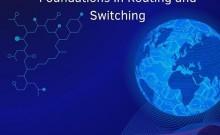A new study conducted by research firm IDC revealed that computer users will spend 1.5 billion hours and $22 billion in total to identify, determine and recover from the impact of malware.
The study titled as 'The Dangerous World of Counterfeit and Pirated Software' showed how pirated software has hurt the cyber security of consumers, enterprises and the governments. The study which was commissioned by software giant Microsoft has analyzed 270 websites and peer-to-peer (P2P) networks, 108 software downloads, and 155 CDs or DVDs. It also interviewed 2,077 consumers and 258 IT managers or chief information officers in Brazil, China, Germany, India, Mexico, Poland, Russia, Thailand, UK and US.
"The cybercrime reality is that counterfeiters are tampering with the software code and lacing it with malware. Some of this malware records a person's every keystroke -- allowing cybercriminals to steal a victim's personal and financial information -- or remotely switches on an infected computer's microphone and video camera, giving cybercriminals eyes and ears in boardrooms and living rooms.
"The best way to secure yourself and your property from these malware threats when you buy a computer is to demand genuine software," said David Finn, associate general counsel in the Microsoft Cybercrime Center.
The study also cited that 64 percent of the respondents knew who had used counterfeit experienced security issues, and 45 percent had counterfeit software slowing down their PCs forcing them to uninstall the software. Forty eight percent of the respondents noted that their greatest concern with using counterfeit software was data loss, and 29 percent raised concerns about identity theft.
IDC which had conducted a similar kind of study in 2006 also noted the difference between the two studies. Reportedly, the improvement in pirated software is making it difficult to identify in more countries.
"Overall we found a somewhat cleaner environment. Back then, 25 percent of Web sites tried to infect our computers; this time it was 14 percent. Back then, 33 percent of CDs/DVDs tested were infected or had vulnerabilities; this time only 14 percent. Today, browsers are much better at fending off hijackers and redirectors, and search engines are much better at avoiding highly infectious sites," IDC said in the report.











